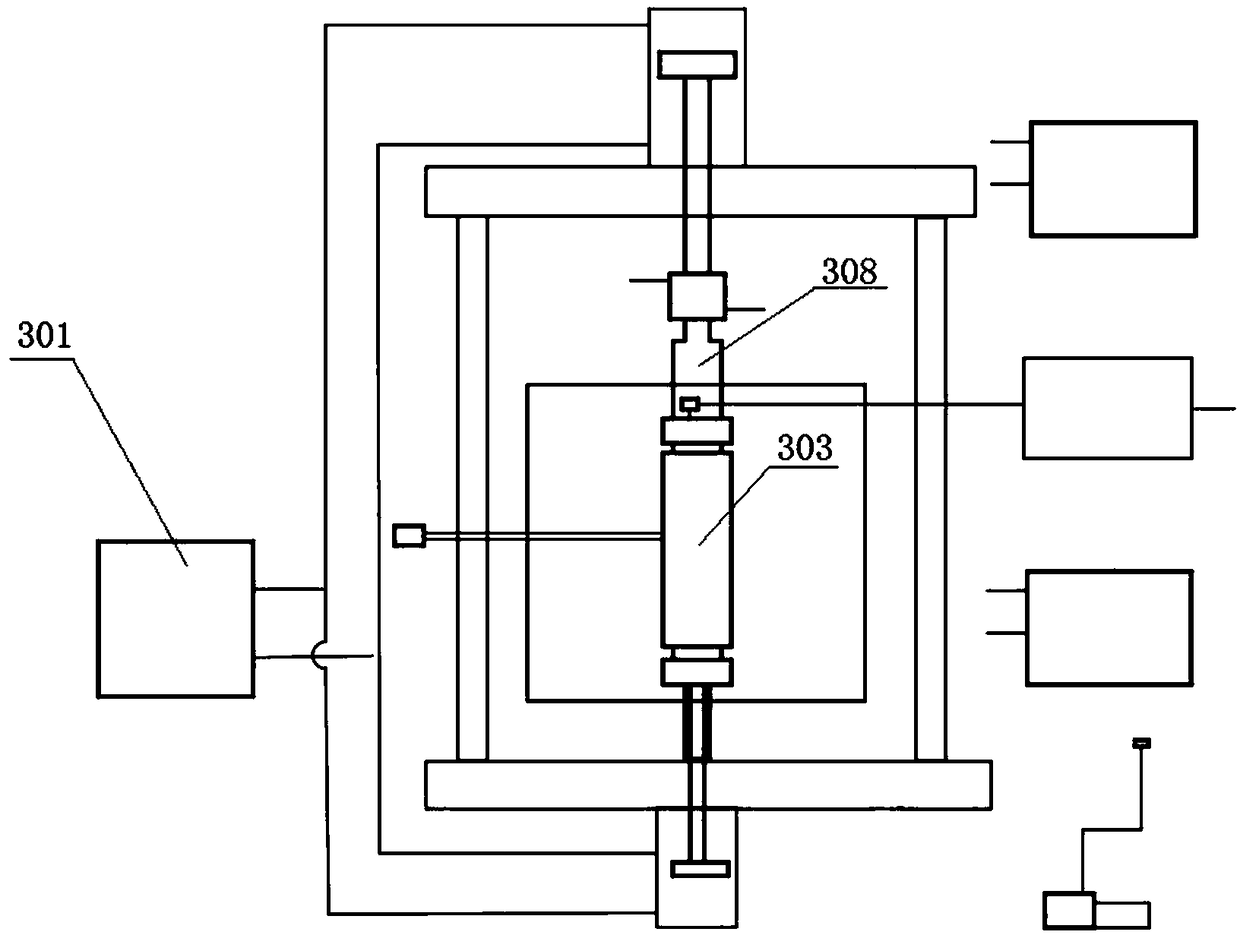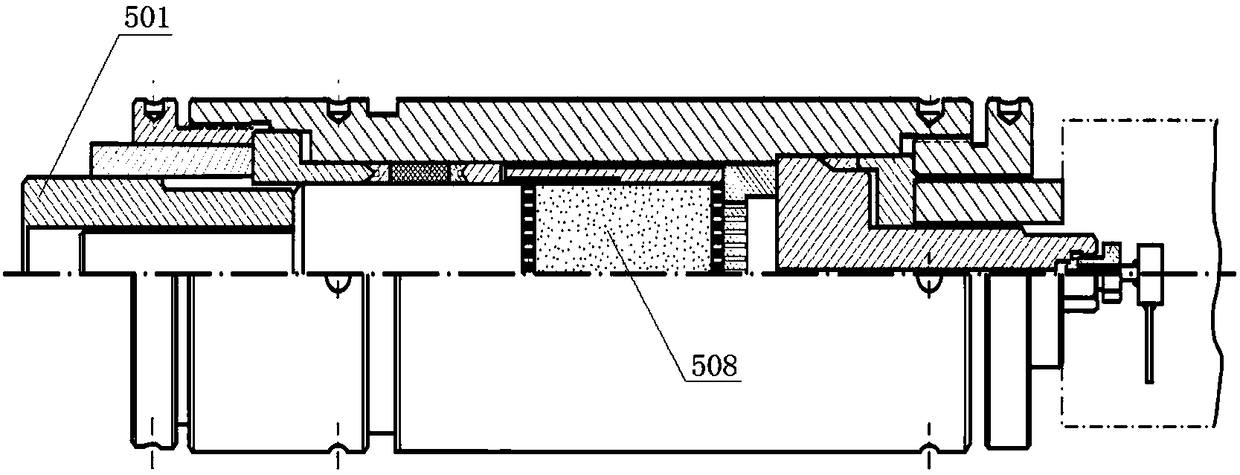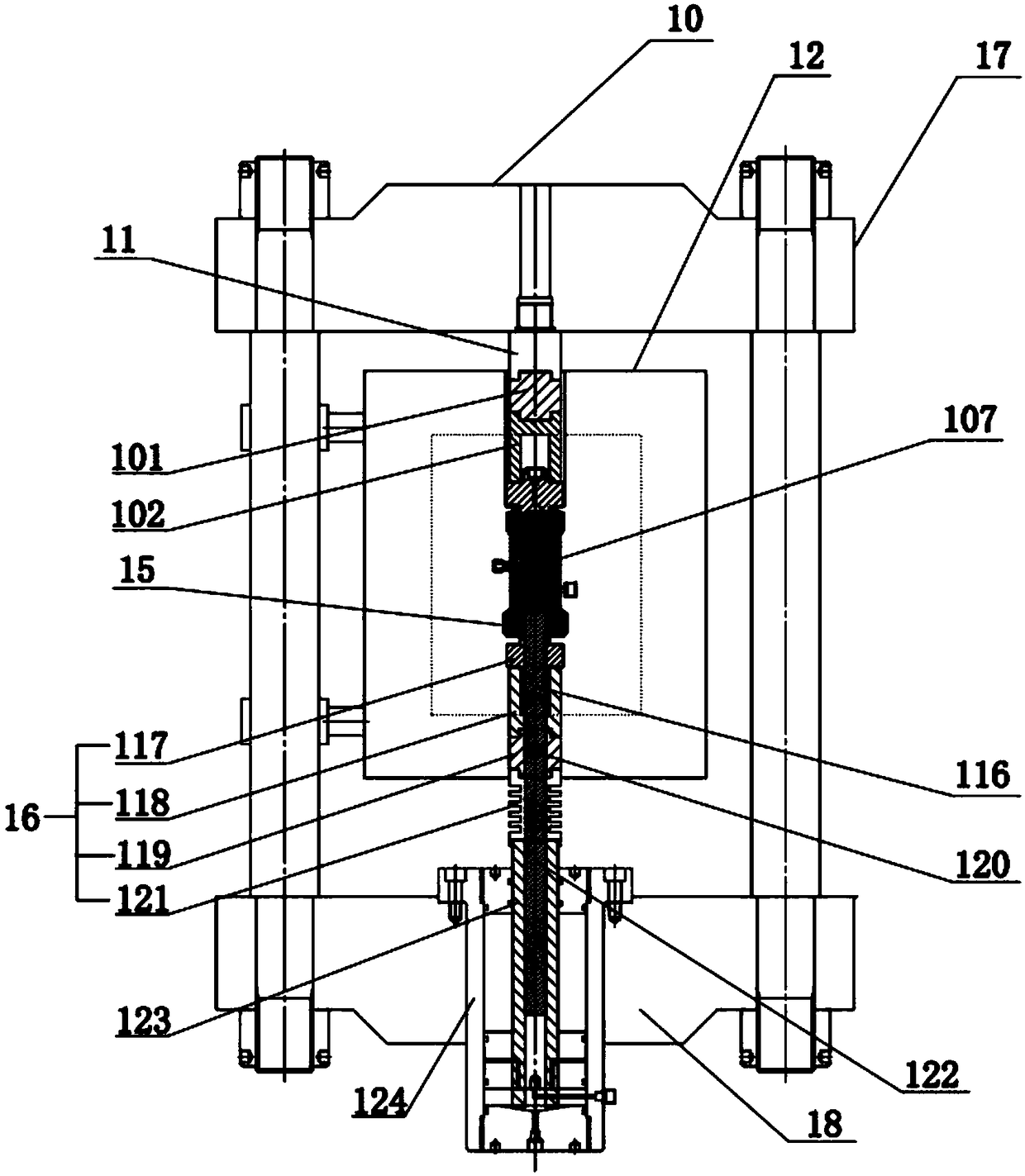Hot-pressing hydrocarbon-generating simulation kettle
A hydrocarbon generation simulation and reaction kettle technology, applied in teaching models, educational tools, instruments, etc., can solve the problems of inconvenient leak detection and maintenance, bulky equipment, etc., to achieve leak detection and maintenance, high efficiency and speed fast effect
- Summary
- Abstract
- Description
- Claims
- Application Information
AI Technical Summary
Problems solved by technology
Method used
Image
Examples
Embodiment Construction
[0040] The present invention will be further described below in conjunction with accompanying drawing.
[0041] In the description of the present invention, it should be understood that the orientation or positional relationship indicated by the terms "upper", "lower", "front", "rear", "inner", "outer" etc. Orientation or positional relationship is only for the convenience of describing the present invention and simplifying the description, and does not indicate or imply that the referred device or element must have a specific orientation, be constructed and operated in a specific orientation, and thus should not be construed as a limitation of the present invention.
[0042] image 3 It is a flow chart of a hot-pressed hydrocarbon generation simulation tank in the embodiment of the present invention; as image 3 As shown, the present invention provides a hot-pressed hydrocarbon generation simulation kettle with different acquisition parameters, which is mainly used for geoch...
PUM
 Login to View More
Login to View More Abstract
Description
Claims
Application Information
 Login to View More
Login to View More - R&D
- Intellectual Property
- Life Sciences
- Materials
- Tech Scout
- Unparalleled Data Quality
- Higher Quality Content
- 60% Fewer Hallucinations
Browse by: Latest US Patents, China's latest patents, Technical Efficacy Thesaurus, Application Domain, Technology Topic, Popular Technical Reports.
© 2025 PatSnap. All rights reserved.Legal|Privacy policy|Modern Slavery Act Transparency Statement|Sitemap|About US| Contact US: help@patsnap.com



